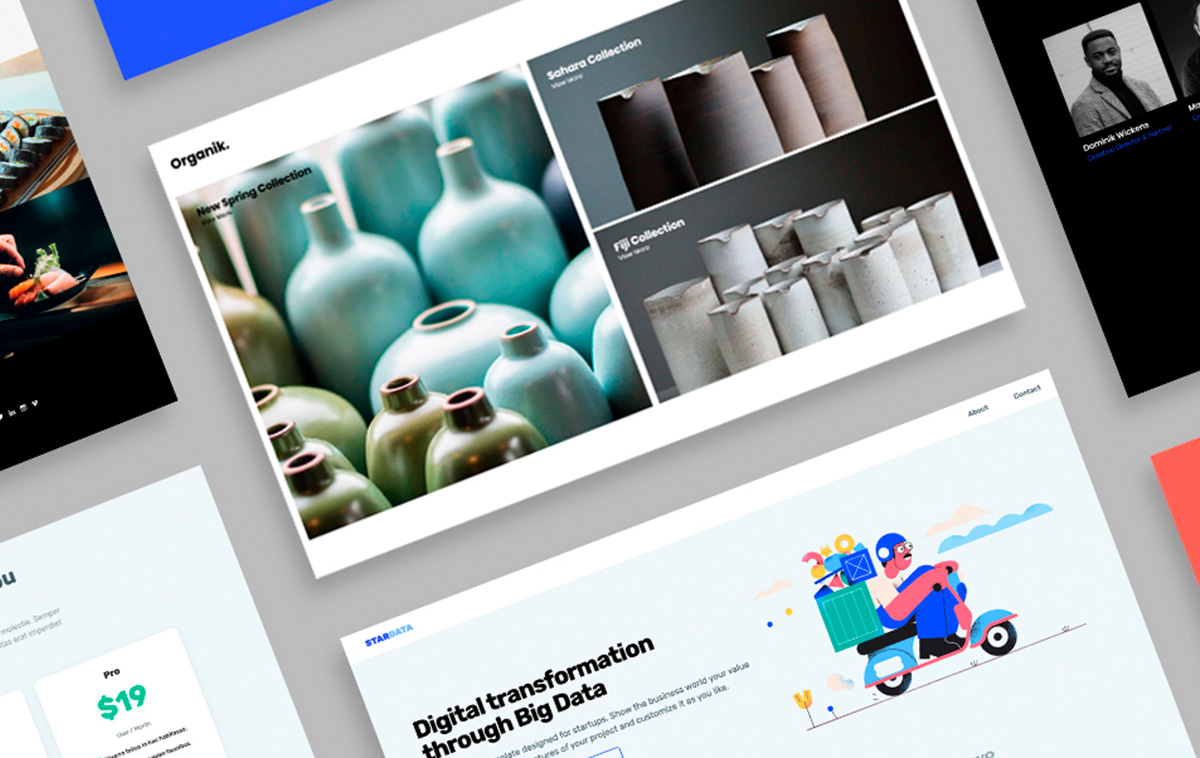Affordable Aligned Position Web Design: Top-Notch Web Design Services at Competitive Prices
Affordable Aligned Position Web Design: Top-Notch Web Design Services at Competitive Prices
Blog Article
The Very Best Kinds Of Web Style to Boost User Experience and Engagement
In the ever-evolving landscape of digital interaction, the effectiveness of Web design dramatically influences user experience and engagement. Various design methods, such as minimal, responsive, and interactive layouts, each offer unique advantages that can provide to varied customer demands.
Minimal Website Design
As digital landscapes become increasingly cluttered, minimal Web style has become an effective strategy to boosting individual experience. This style viewpoint prioritizes simplicity, focusing on important elements while eliminating unneeded disturbances. By making use of enough white room, simple navigation, and a limited color scheme, minimal style fosters quality and routes customer interest to essential content.
The core concept of minimalist Web style is to produce a smooth interaction for users. By reducing cognitive lots, individuals can swiftly comprehend info without feeling bewildered. This direct strategy not only improves usability yet also urges interaction, as visitors are more probable to explore a website that is easy and aesthetically attractive to navigate.
In addition, minimalist style typically highlights typography and images, using these components tactically to convey messages successfully. This concentrate on important parts can enhance brand identity and develop a memorable customer experience. Basically, minimal Web style is not simply a trend; it is a thoughtful method that recognizes the significance of user-centered layout. By stripping away nonessential components, designers can produce a much more interesting, efficient, and delightful Web experience for all individuals.
Responsive Website Design
In today's diverse digital atmosphere, responsive website design has actually come to be crucial for creating a seamless user experience throughout a multitude of devices. As customers access websites on smartphones, tablets, desktops, and laptops, the capability of a web site to adapt its design and material to various screen sizes and resolutions is essential.
Responsive Web design employs flexible grids, photos, and CSS media questions to make certain that Web content exists optimally, no matter the gadget used. This approach not just boosts the aesthetic charm of a website but additionally dramatically enhances use. Individuals are most likely to involve with a site that offers a consistent experience, as it removes the stress of needing to zoom in or scroll exceedingly.
By taking on responsive style, businesses can boost their presence and reach a wider target market. In summary, responsive Web design is an essential technique that enhances individual experience, interaction, and overall fulfillment.
Interactive Web Style
Receptive Web layout lays the foundation for improving user experience, yet interactive Web style takes this an action further by engaging individuals in a much more dynamic method - Aligned Position Web Design. By incorporating elements such as computer animations, clickable models, and real-time responses, interactive website design captivates users, drawing them into a richer surfing experience
This approach not only promotes interaction yet additionally urges users to check out material proactively instead than passively eating it. Strategies such as gamification, where customers gain benefits for finishing see this jobs, can considerably enhance the time invested in a website and boost total satisfaction. Interactive features can simplify intricate info, making it a lot more satisfying and digestible.

Including interactive design aspects can additionally result in greater conversion rates, as customers are more probable to involve with a website that actively includes them. Aligned Position Web Design. Ultimately, interactive website design transforms individual experiences right into additional hints remarkable journeys, guaranteeing that site visitors return time and again
Apartment Design
Characterized by its minimalistic strategy, level layout stresses simpleness and capability, removing away unnecessary aspects and concentrating on crucial attributes. This layout philosophy focuses on use, ensuring that users can navigate user interfaces effortlessly and performance. By using a tidy aesthetic, flat layout removes the mess usually located in a lot more ornate styles, consequently boosting individual focus on content and performance.
The hallmark of flat layout exists in its usage of strong colors, straightforward typography, and geometric shapes. These components add to a visually enticing user interface that is both friendly and modern-day. Furthermore, flat style fosters a feeling of quality, enabling users to recognize crucial activities and info without interruption.
Additionally, level layout is particularly reliable in responsive Web layout, as its simpleness translates well across different devices and display dimensions. By focusing on vital attributes, level design not just meets individual requirements yet additionally encourages seamless communication, making it a vital element of efficient Web layout approaches.
Adaptive Web Design
Flexible website design tailors the user experience by creating multiple repaired formats tailored to various screen sizes and devices. Unlike receptive layout, which fluidly adjusts a single layout, adaptive design employs unique layouts for certain breakpoints, making certain optimum presentation on various platforms. This approach enables developers to concentrate on the one-of-a-kind characteristics of each device, enhancing usability by providing exactly what individuals need based on their context.
One of the key benefits of flexible website design is its capability to enhance load times and performance. By offering customized content and pictures that fit the individual's gadget, web sites can reduce data use and have a peek at this site enhance loading speeds. This is particularly useful for users with slower links or minimal data strategies.

In addition, adaptive style assists in a more regulated and regular branding experience. Considering that designers create several designs, they can make certain that the visual aspects straighten with the brand name's identification across different systems - Aligned Position Web Design. This causes a cohesive user experience, improving engagement and advertising individual retention
Conclusion
In final thought, the combination of minimal, receptive, and interactive website design principles significantly enhances user experience and interaction. Minimal layout cultivates clearness and focus, while receptive style makes certain adaptability across various gadgets, promoting ease of access. Interactive layout astounds customers via vibrant components, urging expedition and customization. Jointly, these style comes close to add to the development of straightforward settings that not just boost satisfaction yet additionally drive greater conversion prices, highlighting their essential relevance in modern website design strategies.

Minimalist style promotes clearness and emphasis, while receptive style makes certain flexibility throughout numerous tools, advertising accessibility. Collectively, these design approaches contribute to the development of straightforward settings that not just improve complete satisfaction but additionally drive higher conversion prices, emphasizing their important relevance in contemporary Web design approaches.
Report this page